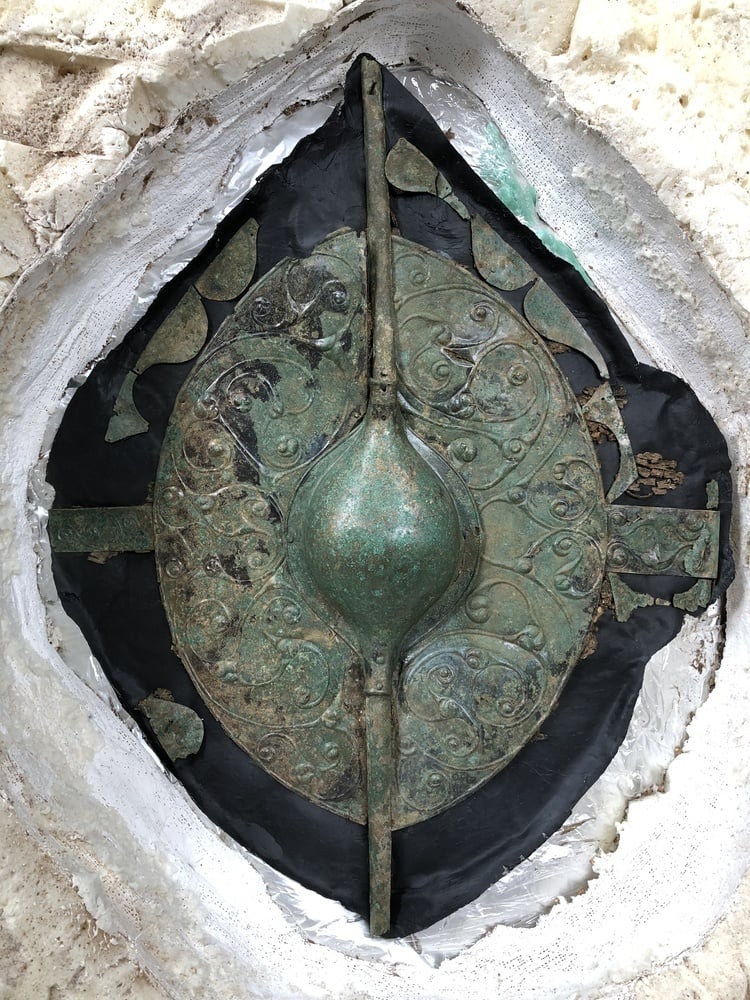
In a story seemingly fit for Game of Thrones, an ornate Iron Age shield that was unearthed from a “warrior grave” is now being deemed “the most important British Celtic art object of the millennium,” according to Dr. Melanie Giles, of the University of Manchester’s archaeology department. The sweeping proclamation comes after two years of extensive conservation work was conducted on the bronze shield, the results of which found design features—the most prominent being its scalloped border—never before seen in any other Iron Age object.
Measuring 30 inches, the piece of armor boasts an elaborate, detailed pattern, which would have required its maker to hammer from the opposite side in order to render the asymmetrical formation of mollusk shells that culminate at the shield’s raised center. Experts categorize this swirling design as early Celtic art, estimating its date between 320–174 BC, and say it is typical of the La Tène culture that dominated Europe during the late Iron Age.
Moreover, conservators identified a sword puncture hole and signs of repair work on the artifact, suggesting that the object was functional and practical. Such discoveries have the potential to debunk opposing theories suggesting that sumptuous shields were decorative items only. “The popular belief is that elaborate metal-faced shields were purely ceremonial, reflecting status, but not used in battle,” said Paula Ware of MAP Archaeological Practice, who oversaw the excavation. “Our investigation challenges this….Signs of repairs can also be seen, suggesting the shield was not only old but likely to have been well-used.”
Pocklington Iron Age shield conservation during excavation. Courtesy MAP Archaeological Practice.
It indeed appears that the shield was a cherished belonging; it was initially found underneath the skeleton of a man—presumably that of the “warrior” for which the grave is nicknamed—with its prominent location next to the body suggesting great value and personal significance.
The burial site itself was originally discovered in 2017 in a housing development near the town of Pocklington in Yorkshire, United Kingdom. In addition to the so-called “object of the millennium,” archaeologists found an upright and intact chariot; a brooch of bronze and red glass; and the remains of six sacrificial pigs and two horses, which were arranged so as to appear to be caught in mid-leap. Experts believe the warrior was over 46 years of age, and that the extravagance of his grave propounds that he was a highly respected member of the community.
“The magnitude and preservation of the Pocklington chariot burial has no British parallel, providing a greater insight into the Iron Age epoch,” Ware concluded. For those seeking more details on the warrior grave, a detailed compilation of the research will be published by Oxbow Books in spring 2020.